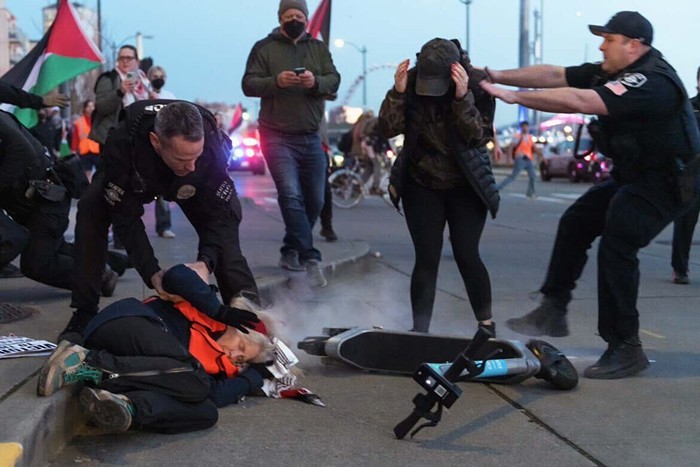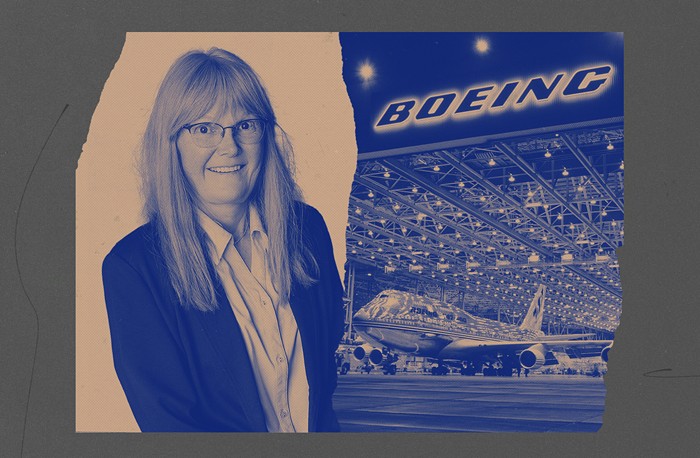Sitting behind a low conference table in a nondescript meeting room in the basement of the Seattle Monorail Project's downtown headquarters, SMP director Joel Horn looked, of all things, nervous as he announced the most positive news to come out of the agency in months: The SMP had finally completed negotiations with lone monorail bidder Cascadia Monorail Company, and would be announcing details of the proposal in two weeks.
The contract Horn described will be around $1.6 billion, which agency officials say is within the borrowing limits imposed on the agency by its authorizing legislation. It will include 16 of the 19 stations that were originally planned, eliminating two stops-one at 35th Avenue Southwest and Avalon Way in West Seattle, the other at Elliott Avenue and Mercer Street in lower Queen Anne-whose ridership estimates turned out to be lower than expected. A third station, at the site of the current Federal Reserve building at Second Avenue and Madison Street downtown, will be built when the SMP can buy the property from the federal government. Rumors had circulated before the announcement that the latest plan might reduce the number of stops to 14 or even fewer.
The proposal unveiled Friday also delays the monorail's opening date until 2010, one year later than expected. "I wish that hadn't happened, but what's the alternative?" said board member Cleve Stockmeyer, who blamed the delay on the length of negotiations, which took seven months longer than Horn predicted. "If we hadn't come to an agreement, we would have had to [re-bid] the project," Stockmeyer said.
Among the other highlights of the proposal:
• A $200 million-plus reserve, which Horn says will enable the agency to pay for any unexpected contingencies.
• A $500 million performance bond, to be put up by the bidder, to ensure that Cascadia will design, build, and equip the project. Cascadia will also put up an additional $50 million bond to guarantee it will operate and maintain the monorail for 5 years, with an option to extend the contract for 10 years after that.
• Trains that will arrive at eight-minute intervals (instead of the original four to six), a provision that some on the monorail board say falls short of what the agency said it would provide. "If you're measuring us against our promises, yeah, we sort of skated in under the promise on that one," Stockmeyer says. The longer headways result partly from budget constraints (fewer trains) and partly from the decision to run parts of the line on a single track, reducing the number of trains that can be on the line at a given moment. (The overall amount of single-tracking is reportedly reduced in the latest proposal, which limits single-track segments to the West Seattle Bridge and the ends of the line in Ballard and West Seattle.)
The new proposal also includes stations that-in contrast to the elaborate, enclosed, individualized stations proposed during community discussions two years ago-will be relatively small, open-air structures with designs similar to those of SkyTrain in Vancouver, B.C. Earlier plans had called for stations that were customized by neighborhood; early suggestions included stations that looked like fishing ships or included waterfalls and "interactive bells"). Monorail design and construction director Tom Horkan said the scaled-back stations "fit much better into the neighborhood context than enclosed stations," Horkan said. But Laws calls the stations themselves "blah ... with no inspiring characteristics whatsoever. These are the mass-transit equivalent of a bus shelter."
The agency's open-air-station plans also eliminate the possibility of enclosed retail shops in the stations, which were part of the agency's original proposal. Horn and other proponents of the change now argue that station-based coffee shops and magazine stands will compete with neighborhood businesses, and won't encourage monorail riders to shop in the neighborhoods. "Actually spending monorail dollars to build stores in our stations made the stations bigger and more expensive and put them in competition with the community," Horn says. Laws says financial considerations played a bigger role than concern for community businesses in the agency's decision to jettison its station storefronts.
The new proposal also eliminates the so-called "tourist trains"-specially equipped and staffed monorails for which the agency might charge as much as $20 a ride. The changes leave open the question of where the agency's "entrepreneurial" revenues, which early plans suggested would provide as much as $12 million a year toward the monorail's annual operations and maintenance costs, will come from. (The $12 million figure comes from high estimates of advertising and "tourist" revenue in the agency's 2002 monorail plan.) Horn says cost savings from cutting the tourist trains would more than make up for the loss of potential retail and tourist dollars, and says the SMP would rather focus on "the best kind of entrepreneurial efforts"-advertising on and inside the trains themselves-than spend money outfitting monorail trains for tourists.
Meanwhile, the city council has begun its official review of the monorail's finances, the final legislative hurdle before the monorail can receive its construction permits. Horn predicts the process will go smoothly. "We just have to show them that we can complete the project," he says. "We're obviously highly confident that once we start this, we'll be able to finish."
On Tuesday, as The Stranger went to press, we received a memo that monorail opposition group OnTrack put together assailing the SMP's cost estimate of $1.6 billion. Including contingencies, existing debt, operating costs, and utility relocation expenses, the group charged, brings the total cost of the monorail above $2 billion in year-of-expenditure dollars-hundreds of millions more than the $1.75 billion the monorail agency estimated in 2002. Horn acknowledges that OnTrack's numbers "are basically correct."
"The total project cost is up," he says, but "what we're buying is better and more what the taxpayers asked for." And, he says, the total cost is still affordable under the agency's taxpayer-imposed debt cap of $1.5 billion (in 2002 dollars). "Is it better? Yes. Does it cost more? Yes. Can we afford it? Yes." How much more expensive-and exactly how the SMP will be able to afford it-will be revealed on June 20, when the agency releases details of the proposal. ■


















